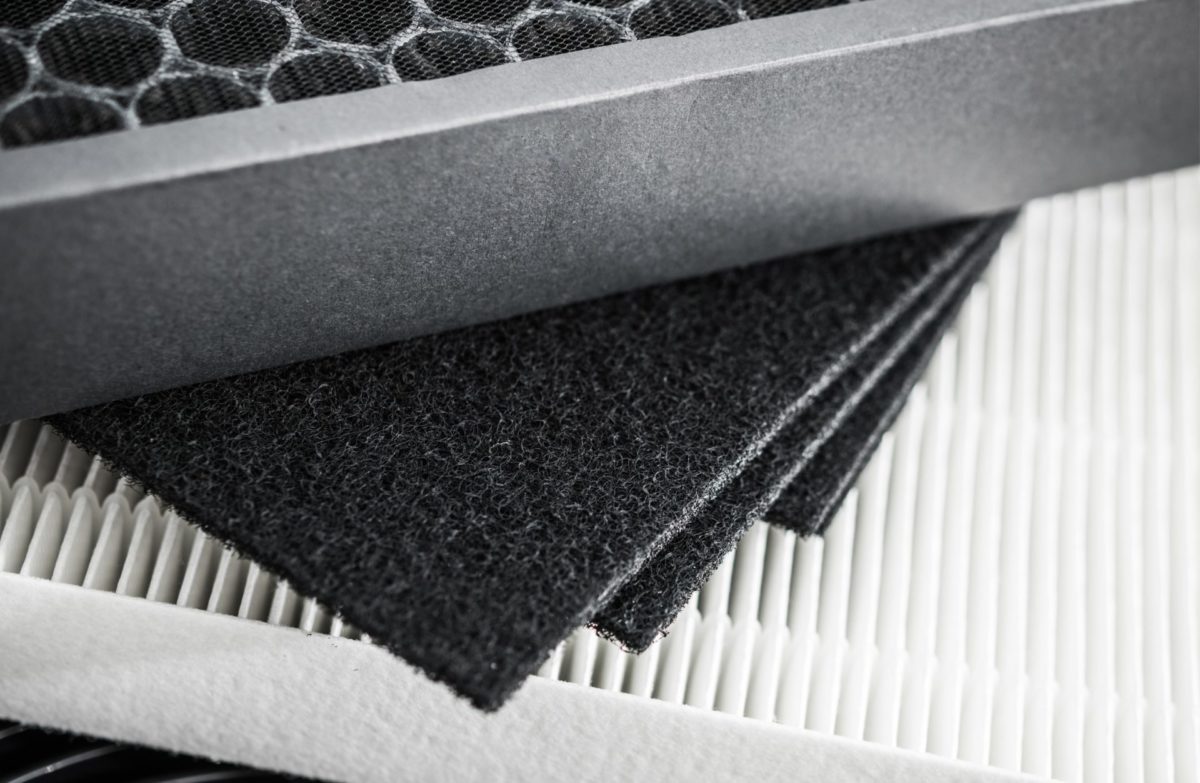Differences Between HEPA Filters and Other Filters

Posted on July 30, 2022 by Angel Clean
If you have considered buying an air purifier for your home or business, you’ve probably heard of a HEPA filter, also known as a High-Efficiency Particulate Air filter. With consumer and commercial usage, HEPA filters are the leading filter of choice.
What keeps the HEPA filter ahead of other filters is its ability to filter 99.97% of particulate matter in the air. The HEPA filter can help remove:
- Allergens: pet dander, pollens, and mold spores
- Dust and Dirt
- Dust mite feces
- Odors, smog, and smoke
- Viruses like COVID-19
In other words, small fine particles can be difficult to see with the naked eye.
Particle Size
To give you some perspective on particulate sizes, let’s start with it’s pretty tiny. In the late 1800s, a team of French scientists coined the phrase “micrometer.” The word describes things that are one-millionth of a meter. For example:
- Human hair is 70 microns in diameter, equivalent to 0.0020 inches.
- Humans cannot see particles with the naked eye unless it is 40 microns or 0.0015 inches.
- White blood cells are 25 microns or 0.0010 inches in diameter.
The smaller the micron number, the less likely you will be able to see it with the naked eye. Otherwise, it would require a microscope. For the HEPA and other air purifying filters, particles filtered from the air range in sizes from less than 5 microns to as large as 30 microns. From the list above:
- Odors are 0.0004 microns.
- Dust or dirt is less than 5 microns.
- Smoke is 1 micron in size.
- Allergens can range in size from 1 to 25 microns.
- Molds and dust mite feces are 20 microns.
- Viruses are 30 microns.
Filter Performance Ratings
Several filter manufacturers use different performance scales for air filter ratings for every air purifying filter on the market, whether through Amazon, Home Depot, Lowes, or even Walmart stores.
There are three commonly used performance rating measures.
- MERV
- FPR
- MPR
MERV Performance Rating
Minimum Efficiency Reporting Values (MERV) air filtration rating is an industry-standard rating system developed by the American Society of Heating, Refrigerating, and Air Conditioning Engineers, which domestic and international filtration manufacturers widely use.
Standard MERV scale starts at the low end of 1–4 stopping particulate that is 3.0 to 10.0 microns. The MERV ratings continue up through 16. For example, a MERV-16-rated filter will remove 95% of particles ranging in size from 0.30 to 10 microns.
Filtration Performance Rating (FPR)
The FPR was the color-coded system created by The Home Depot for brands sold in-store. The company required manufacturers to color-coding their packaging in correspondence with the MERV rating scale. In addition, the following FPR numerical values will appear on the filter package as a weighted average for each filter.
- FPR-4 are “good” at removing large particles, like lint, pet dander, large dust, and direct particles.
- FPR-7 is “better” for removing large and small particles, like bacteria or mold.
- FPR-9 performs “best” at removing large and small particles but outperforms in removing smoke, smog, microscopic allergens, and particles that can carry viruses.
- FPR-10 is a “premium” filter for removing everything the FPR-9 filters remove, plus odor particles.
MPR Filter Performance
3M’s Microparticle Performance Rating (MPR), developed by their scientists to close the gaps in MERV standards that might be missing. The MPR rating performs best at removing everything MERV-rated filters do, plus particles that MERV might be missing that range in size from 0.3 to 10 microns.
However, the scientific jury is still debating this topic since HEPA filters still rank high in performance with a high price point for consumers.
HEPA versus Other Filters
So how does all this relate to HEPA filtration? Well, it filters all those from the air you breathe. Whether in your home or office, air purifiers with HEPA filters will pull the airflow through the filters and push clean air back into the environment. Leaving the air, you breathe free of odors, dirt, dust, smoke, allergens, molds, and viruses.
But how do other air filters differ from the HEPA filter?
- ULPA
- DFS
ULPA Filters
HEPA and ULPA filters, also known as Ultra Low Particle Air filters, differ because they can remove up to 99.999% of the particles that move through the air. The problem is that ULPA filters restrict airflow by 50%, and because of the density of these filters, more energy is used to work effectively.
DFS Filters
Disinfecting Filtration System (DFS) technology is as effective as HEPA. However, HEPA is a denser filter media than the DFS. The air filtration efficiency of the DFS filter is 99.99%, which is slightly higher than the HEPA. Although the DFS is the latest industry introduction, it remains too expensive and out of reach for most consumers.
Who Installs Air Purification System?
If you are interested in an air purification system for your home or place of business for improved indoor air quality, contact the team at Angel Clean. They’ll schedule a meeting with you to discuss installation and cost.
Give the team at Angel Clean a call today at (417) 206-8787!